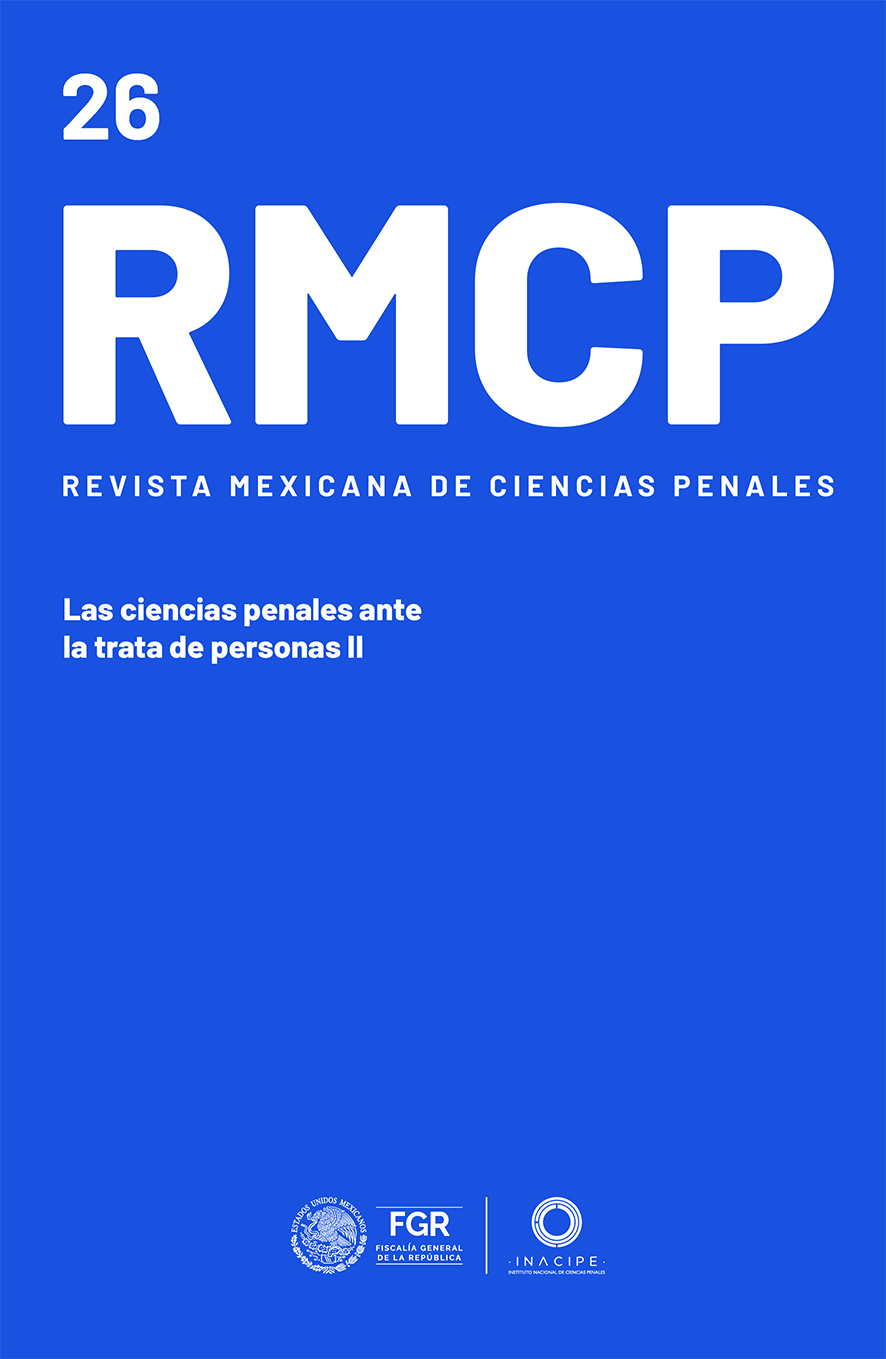Inteligencia artificial para la detección y prevención de la trata de personas
Contenido principal del artículo
Resumen
La inteligencia artificial ha revolucionado la lucha contra la trata de personas, proporcionando herramientas avanzadas para su prevención e investigación. Tecnologías como el procesamiento de lenguaje natural, el análisis de big data, la geolocalización, el reconocimiento facial y el blockchain han demostrado ser eficaces en la identificación de redes criminales y en la detección de víctimas, a través del análisis automatizado de grandes volúmenes de datos. La inteligencia artificial permite anticipar patrones delictivos, rastrear transacciones financieras sospechosas y fortalecer la protección de identidad de las víctimas. Sin embargo, su implementación también plantea desafíos en términos de privacidad, sesgos algorítmicos y regulación legal, lo que exige un marco normativo sólido para garantizar su uso ético y transparente. Este estudio analiza el impacto de la inteligencia artificial en la prevención de la trata de personas y propone soluciones para maximizar sus beneficios sin comprometer los derechos humanos.
Descargas
Detalles del artículo

Esta obra está bajo una licencia internacional Creative Commons Atribución 4.0.
Deprecated: json_decode(): Passing null to parameter #1 ($json) of type string is deprecated in /var/www/html/plugins/generic/citations/CitationsPlugin.inc.php on line 49
Métricas
Citas
Amnistía Internacional (2021). Surveillance and human rights: The risks of facial recognition technology. https://www.amnesty.org/en/latest/research/2021/06/surveillance-and-human-rights/
Bejarano Rodríguez, María, Teresa de Gasperis, Estefanía Eléxpuru Boullosa, Ana Romo Escribano (2023). El impacto de las nuevas tecnologías en la trata de seres humanos. Accem. https://www.accem.es/wp-content/uploads/2023/12/accem-impacto-tecnologias-trata-seres-humanos.pdf
Buolamwini, Joy y Tinmit Gebru (2018). Gender Shades: Intersectional Accuracy Disparities in Commercial Gender Classification. Conference on Fairness, Accountability, and Transparency. Massachusetts: Gender Shades. https://proceedings.mlr.press/v81/buolamwini18a.html
Deparment of Homeland Security (2025). "About Blue Campaign". Blue Campaign. https://www.dhs.gov/blue-campaign/about-blue-campaign
Europol (2022). Seizing the Opportunity: 5 Recommendations for Crypto Assets-Related Crime and Money Laundering. 2022 Recommendations of the Joint Working Group on Criminal Finances and Cryptocurrencies. Europol y Basel Institute on Governance. https://baselgovernance.org/sites/default/files/2022-12/2022_Recommendations_Joint_Working_Group_on_Criminal_Finances_and_Cryptocurrencies.pdf
FMI: Fondo Monetario Internacional (2023). “Cryptocurrencies and Illicit Financial Transactions: Risks and Countermeasures”.https://www.imf.org
Hacibedel, Burcu y Héctor Pérez-Saiz (2023, 29 de septiembre)."Assessing Macrofinancial Risks from Crypto Assets". International Monetary Fund Working Papers. Fondo Monetario Internacional.
IBM: International Business Machines (2025). X-Force 2025 Threat Intelligence Index. https://www.ibm.com/thoughtleadership/institute-business-value/report/2025-threat-intelligence-index
IBM (s.f.-a). “¿Qué son las redes neuronales?”. https://www.ibm.com/mx-es/topics/neural-networks
IBM (s.f.-b). “¿Qué es un árbol de decisión?”. https://www.ibm.com/mx-es/topics/decision-trees
IBM (s.f.-c). “¿Qué es el clustering?”. https://www.ibm.com/eses/topics/clustering
Interpol (s.f.). “Reconocimiento facial”. https://www.interpol.int/es/Como-trabajamos/Policia-cientifica/Reconocimientofacial#:~:text=Desde%20su%20creaci%C3%B-3n%2C%20el%20Sistema,personas%20de%20inter%-C3%A9s%20y%20desaparecidos
Interpol y Unated Nations Interregional Crime and Justice Research Institute (UNICRI) (2019). Artificial Intelligence and Robotics for Law Enforcement. Torino: UNICRI.
IOM: International Organization for Migration (2021). “IOM Institutional Strategy on Legal Identity”. https://publications.iom.int/books/iom-institutional-strategy-legal-identity
Latonero, Mark (2011). Human Trafficking Online, The role of social Networking Sites and Online Classifieds. Center on Communication Leadership & Policy. Los Ángeles: University
of Southern Carolina.
Lavista Ferres, Juan M. y William B. Weeks, ai for Good: Applications in Sustainability, Humanitarian Action, and Health. Nashville: John Wiley & Sons.
Lyon, David (2018). The Culture of Surveillance: Watching as a Way of Life. Cambridge: Polity Press.
UNODC: Oficina de las Naciones Unidas contra la Droga y el Delito (2024). Global Report on Trafficking in Persons 2024. https://www.unodc.org/documents/data-and-analysis/glotip/2024/GLOTIP2024_BOOK.pdf
Parlamento Europeo y Consejo de la Unión Europea (2024). Reglamentom(UE) 2024/1689 del Parlamento Europeo y del Consejo, de 15 de julio de 2024, relativo a la inteligencia artificial y por el que se establecen disposiciones para su desarrollo, comercialización y uso. En Diario Oficial de la Unión Europea, L 257, de 20 de julio de 2024, 1-60. http://data.europa.eu/eli/reg/2024/1689/oj
Stop the Traffik (s.f.). “Stop the Traffik: Preventing Human Trafficking”. https://stopthetraffik.org/
Stop the Traffik (2025). Partnering to Fight Hidden Crime. https://stopthetraffik.org/wp-content/uploads/2025/04/MARCH-2025-EA-Brochure.pdf
World Economic Forum (2024). Digital Assets Regulation: Insights from Jurisdictional Approaches. Insight Report. https://www3.weforum.org/docs/WEF_Digital_Assets_Regulation_2024.pdf

